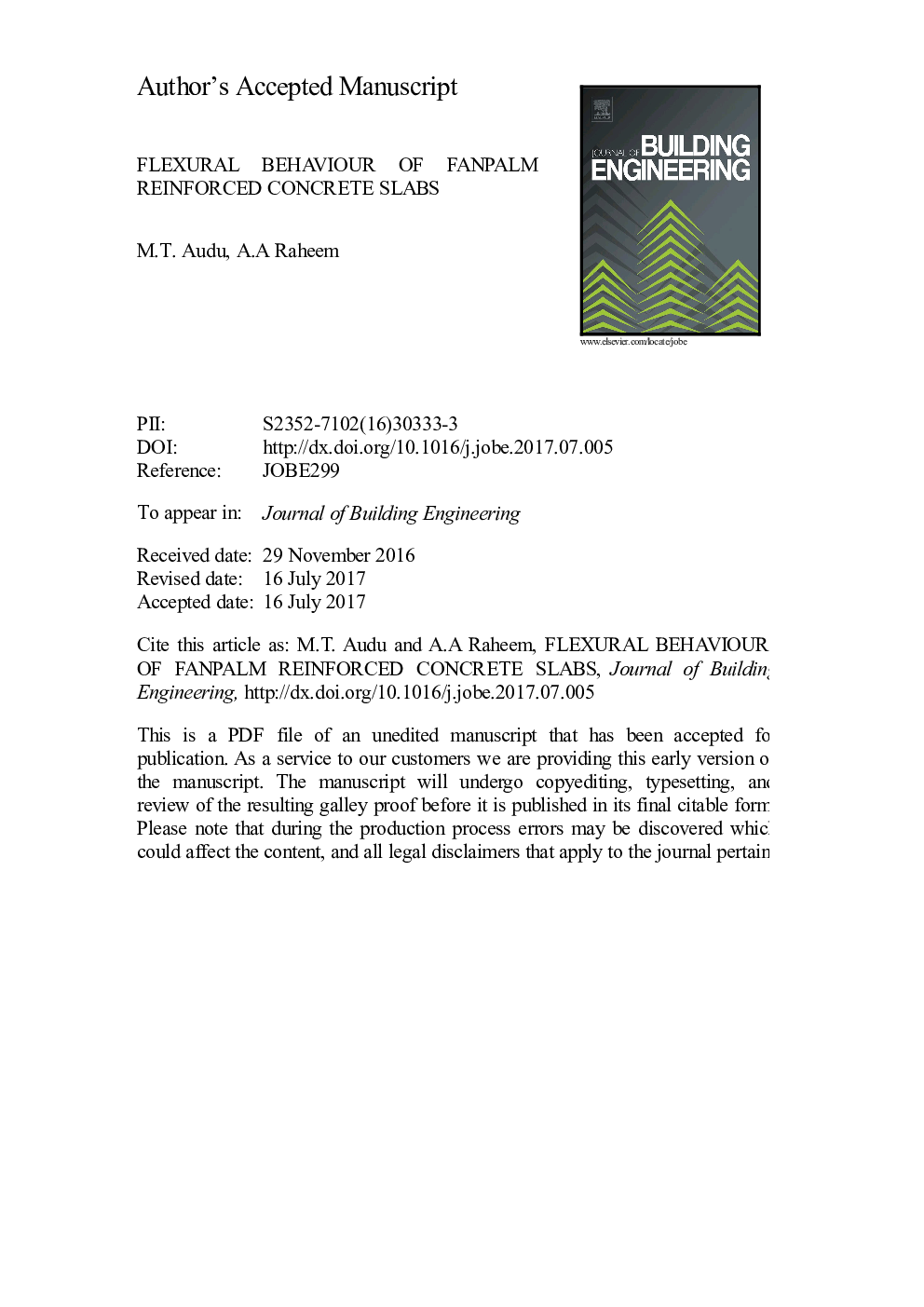| Article ID | Journal | Published Year | Pages | File Type |
|---|---|---|---|---|
| 4923055 | Journal of Building Engineering | 2017 | 17 Pages |
Abstract
The importance of cracks, crack width and load carrying capacity of reinforced concrete member subjected to flexural load is so vital and is considered as a very important parameter under serviceability limit state design of concrete elements. The post-crack behavior of a structural member is a measure of its toughness, a vital parameter often used in evaluating the durability of structural element. Steel have been in used as reinforcements in structural members because of its good properties on high tensile stress, ability to improve the toughness of structural members and its durability in concrete environment. However, steel is now very expensive, hence the need for substantive alternative material. Fanpalm is one of the locally available and has been studied as a suitable alternative to steel reinforcements. The study of the cracks and cracks' patterns with the respect to the sustained loads for concrete slabs reinforced with fanpalm is the concern of this study. Fanpalm specimens were cut, shaped to desired flexural reinforcements sizes. Then used as reinforcements for concrete slabs of 1:2:4 mix and cured in water for 28 days. Flexural strength tests were carried out to evaluate the load causing the first visible crack and the load causing full development of yield lines of fanpalm reinforcement concrete slabs were observed. The theoretical yield loads were lower compared with the observed experimental yielding loads. The results reveal that the cracks increase with increased in load. As the load systematically increases there is another sudden change in deflection at yield points. The highest percentage reinforcement 72%and 65% on y and x plane respectively occurred on slab SLF2 with corresponding value of 16.20Â kN and 29.35Â kN at first crack and yield point respectively.
Related Topics
Physical Sciences and Engineering
Engineering
Civil and Structural Engineering
Authors
M.T. Audu, A.A. Raheem,
